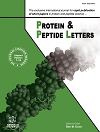- Home
- A-Z Publications
- Protein and Peptide Letters
- Previous Issues
- Volume 25, Issue 8, 2018
Protein and Peptide Letters - Volume 25, Issue 8, 2018
Volume 25, Issue 8, 2018
-
-
Molecular Aspects of the Dengue Virus Infection Process: A Review
More LessAuthors: Luiz F.C. Zonetti, Milena C. Coutinho and Alexandre S. de AraujoBackground: At the present time, dengue is one of the most important arboviruses affecting man, becoming a serious global public health problem, especially in subtropical and tropical countries, where environmental conditions favor the development and proliferation of the mosquito Aedes aegypti. Dengue is caused by a type of flavivírus, which is an enveloped virus of spherical geometry. Nowadays, it is one of the diseases Read More
-
-
-
An Overview of Current Methods to Confirm Protein-Protein Interactions
More LessBy Kenji MiuraBackground: The research field of protein-protein interactions is interdisciplinary and specialized field that spans all aspects of biology, physics and chemistry. Therefore, in order to discuss the protein-protein interaction in detail and rigorously, it is desirable to integrate knowledge and methods of many related fields including boundary areas such as biochemistry, biophysics and physical chemistry in addition to biology, physics a Read More
-
-
-
Transglycosylation Activity of Catalytic Domain Mutant of Endo-1,3-β-glucanase from Cellulosimicrobium cellulans
More LessAuthors: Yoshiji Hantani, Shoko Motoki, Atsushi Miyagawa, Hatsuo Yamamura and Masayuki OdaBackground: Oligosaccharides are of great value in drug discovery programs which address a wide range of therapeutic strategies in medical specialties. However, owing to difficulties in oligosaccharide synthesis by conventional methods, oligosaccharide assembly using enzymes has been explored. The transglycosylases have been demonstrated to be effective for the oligosaccharide synthesis. Further studies are required Read More
-
-
-
Subtle Changes Due to Mutations in the GGDEF Domain Result in Loss of Biofilm Forming Activity in the VC0395_0300 Protein from Vibrio cholerae, but No Major Change in the Overall Structure
More LessAuthors: Om P. Chouhan and Sumit BiswasBackground: Cyclic-di-GMP (c-di-GMP) is a ubiquitous secondary messenger molecule in bacteria synthesized by diguanylate cyclases. This universal messenger regulates diverse cellular functions in bacteria at the transcriptional, translational and posttranslational levels. The cellular functions regulated by c-di-GMP include cell motility, cell cycle progression, virulence, biofilm formation, antibiotic production and other unknown Read More
-
-
-
Sensitive and Selective Immunofluorescence Assay for CA15-3 Detection Using Fluorescein Derivative A10254
More LessAuthors: Xiaoting Huang, Haiyang Liu, Wei Fang, Yan Lin and Ying TanBackground: Carbohydrate antigen 15-3 (CA15-3), a specific breast cancer-related biomarker in serum, can provide direct information to monitor a patient's postoperative status and can predict recurrence and metastasis of breast cancer. The conventional Enzyme-Linked Immunosorbent Assay (ELISA) is an effective approach for CA15-3 detection, but there is a high limit of detection which is more than 1 U mL-1. Therefore, a co Read More
-
-
-
VLP Production from Recombinant L1/L2 HPV-16 Protein Expressed in Pichia Pastoris
More LessBackground: Human papillomavirus 16 is considered a causative agent of genital cancers. Since there is no decisive treatment, the only approach is vaccination of high-risk group. Objective: This study aimed to produce a chimeric L1/L2 protein in Pichia Pastoris system. Method: To develop VLPs of chimeric L1/L2 protein HPV-16, first, a cross-neutralizing epitope of HPV-16 L2 gene was inserted into L1 HPV-16 gene. Then the chim Read More
-
-
-
HYPO: A Database of Human Hypothetical Proteins
More LessBackground: There are genes whose function remains obscure as they may not have similarities to known regions in the genome. Such known ‘unknown’ genes constituting the Open Reading Frames (ORF) that remain in the epigenome are termed as orphan genes and the proteins encoded by them but having no experimental evidence of translation are termed as ‘Hypothetical Proteins’ (HPs). Objectives: We have enhanced Read More
-
Volumes & issues
-
Volume 32 (2025)
-
Volume 31 (2024)
-
Volume 30 (2023)
-
Volume 29 (2022)
-
Volume 28 (2021)
-
Volume 27 (2020)
-
Volume 26 (2019)
-
Volume 25 (2018)
-
Volume 24 (2017)
-
Volume 23 (2016)
-
Volume 22 (2015)
-
Volume 21 (2014)
-
Volume 20 (2013)
-
Volume 19 (2012)
-
Volume 18 (2011)
-
Volume 17 (2010)
-
Volume 16 (2009)
-
Volume 15 (2008)
-
Volume 14 (2007)
-
Volume 13 (2006)
-
Volume 12 (2005)
-
Volume 11 (2004)
-
Volume 10 (2003)
-
Volume 9 (2002)
-
Volume 8 (2001)
Most Read This Month
Article
content/journals/ppl
Journal
10
5
false
en


